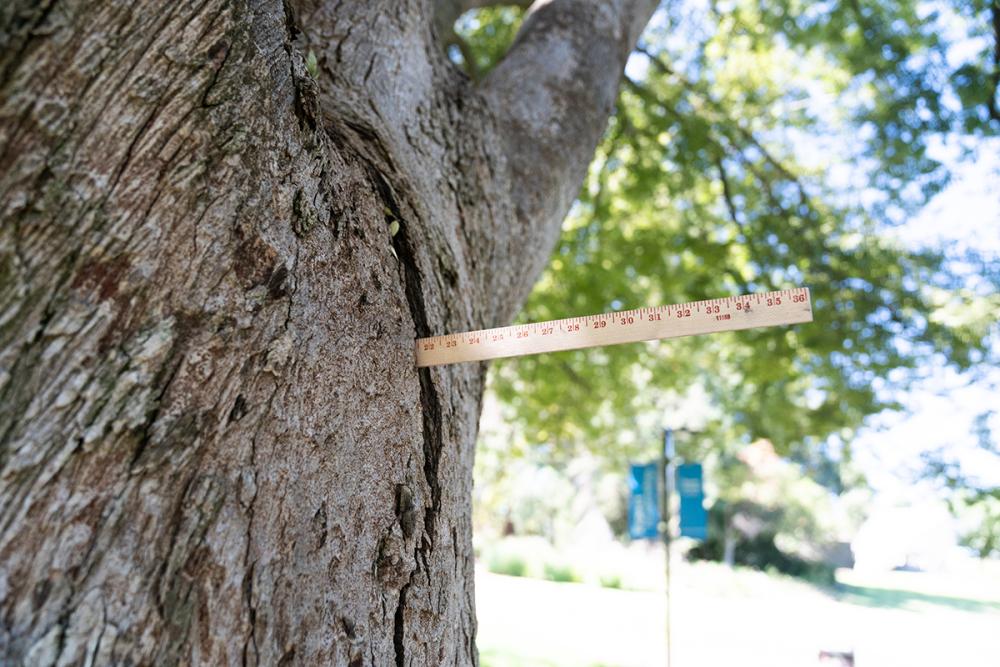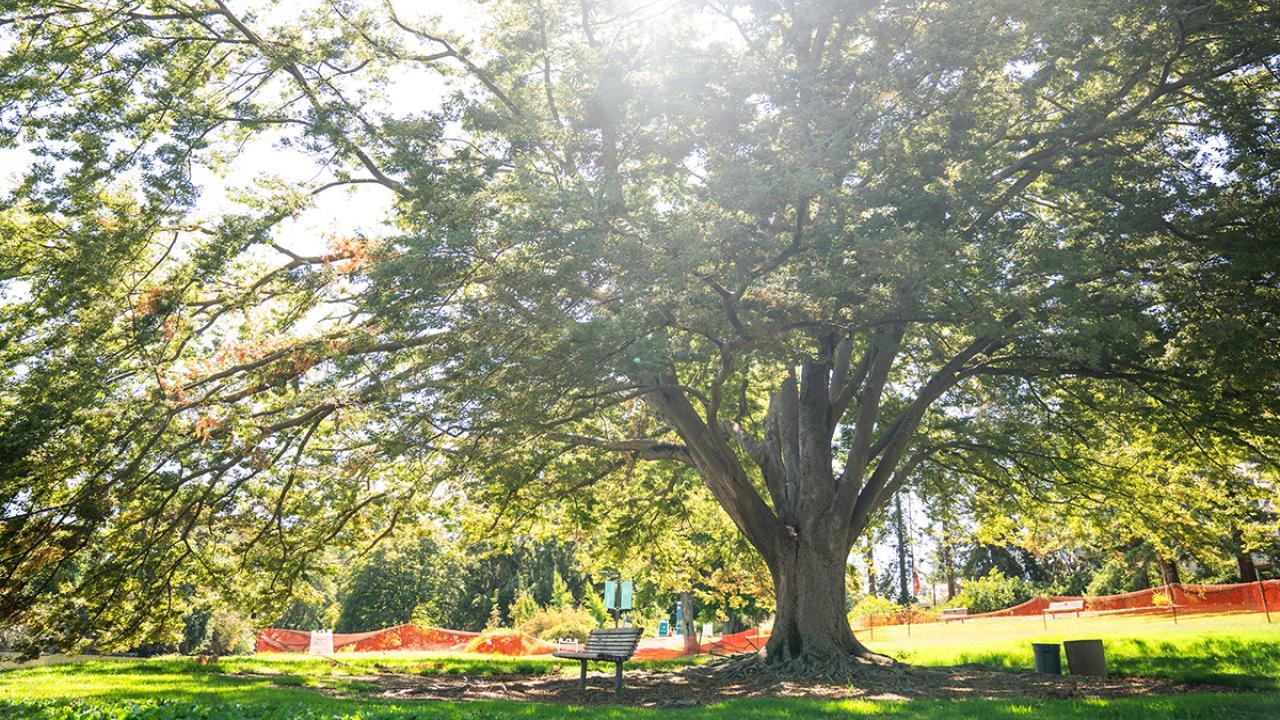In a difficult decision that weighs both safety and sentiment, one of the most beloved and iconic trees on the UC Davis campus is slated for removal Thursday (Sept. 14). The expansive Japanese Zelkova (Zelkova serrata), which has graced the banks of Lake Spafford since the 1960s, grew to serve as a popular gathering place for picnics, wildlife viewing, family photos and more until the recent discovery of a large crack in its trunk. Experts studying the issue determined it is in danger of breaking apart and poses a significant hazard.
The problem was initially detected in August, when staff noticed that the branches over Lake Spafford on the south side of the tree were hanging lower than usual. Their concerns deepened upon discovering a substantial trunk fracture that previously was not visible.

Arboretum and Public Garden teams promptly fenced off the area around the tree to ensure the safety of the community. Following this action, significant steps were taken to see if removing weight from the canopy would allow the crack to close and the trunk to heal. Campus arborists reduced the tree's southern canopy by 50%, but the size of the crack remained unchanged.
“The crack was found to be at least 22 inches deep,” said Tyler Kern, campus urban forester with the Arboretum and Public Garden. “Very unfortunately, it isn’t just superficial, it is a structural flaw.”
The tree's compromised state is attributed to a natural split resulting from its structure and the weight of its massive branches.
Kern noted the absence of horizontal connective tissue among the tree’s five main stems as an additional concern. Failure in one section could lead to the collapse of the entire south side of the tree.
“The separation revealed the presence of plenty of vertical connective tissue, but limited-to-no horizontal support tissue. Even bracing or bolting the tree would not fix the risk of decay and further damage.”
When assessing tree risk, arborists evaluate the likelihood of failure, the potential impact and targets of falling branches, and the severity of consequences. Given the tree's prominent location and the high potential for failure, senior leadership made the incredibly challenging decision to remove the tree.
“Over the years, we've gained valuable insights into the significance of proper pruning and maintenance for young trees — knowledge that this tree would have benefitted from,” Kern said. “As a large number of our campus trees were planted during the 1960s, we've recognized the importance of adopting a different approach — focusing on consistent yearly plantings as well as early pruning.”
Kathleen Socolofsky, assistant vice chancellor and director of the Arboretum and Public Garden, expressed remorse.
“We are devastated to lose such a beautiful and beloved tree,” Socolofsky said. “We love it as much as everyone else. These choices are never taken lightly and reflect our commitment to the legacy and importance of our trees while ensuring the safety of our campus and community.”
This decision also underscores the challenges of maintaining a campus landscape rich in history and tradition. The campus has over 24,000 trees in its urban forest. In the face of aging trees and the effects of climate change, our Campus Tree Renewal Program, an integral part of our Living Landscape Adaptation Plan, ensures the consistent replenishment of our highly valued tree canopy. In 2022-23, Arboretum staff, students and volunteers planted over 300 climate-ready trees across campus.
The plan is to involve our community in a planting event that honors the Zelkova. Discussions are underway to determine the replacement species and timing for planting. Campus Planning and the Arboretum and Public Garden units are partnering to make informed decisions. Notably, the entire area is due for revitalization, aligning with the upcoming Arboretum Waterway Flood Protection and Habitat Enhancement Project, which is currently set to commence in summer 2024.
We deeply appreciate the significance of trees within our community and remain committed to safeguarding our cherished tree canopy. If you have any inquiries or seek further information, please feel free to reach out through the contact form provided on our Campus Tree Renewal Program page. Additionally, you can explore an array of valuable resources that shed light on our tree preservation efforts, our vision for their future, and opportunities to enhance your knowledge through self-guided tree tours.
Media Resources
Media contacts:
- Andrew Fulks, UC Davis Arboretum and Public Garden, 530-752-0763, amfulks@ucdavis.edu
- Kat Kerlin, UC Davis News and Media Relations, 530-750-9195, kekerlin@ucdavis.edu
